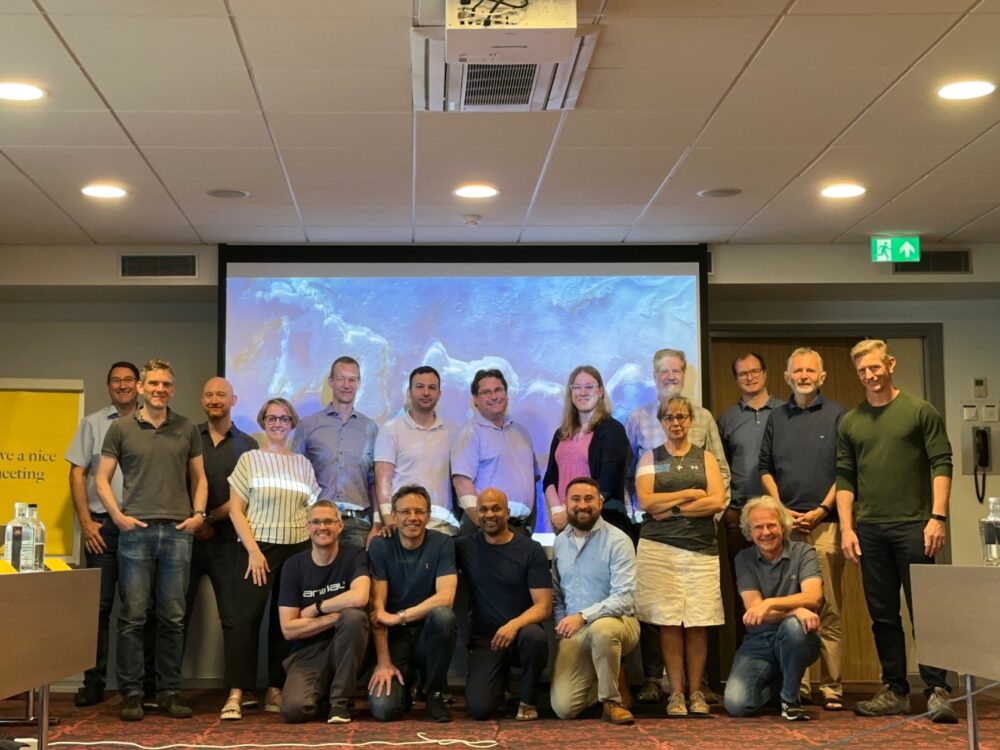OU News
News from The Open University
- Home
- OU leads the way to future high-resolution orbital imaging of Mars
OU leads the way to future high-resolution orbital imaging of Mars
Posted on • Science, maths, computing and technology

The Open University Atmospheric Research and Space Exploration group, led by Professor Manish Patel, has been awarded a €500k grant from the European Space Agency (ESA) to lead the Phase A study for a high-resolution imager for Mars, launching in 2032.
The High-Resolution Imager for Mars Exploration (HiRIME) instrument is an orbiting telescope around Mars, that will take images of the surface of Mars. This will not only support future human and robotic exploration of Mars but also provide new insights into its past and present-day and the processes that shaped the world of our planetary neighbour.
HiRIME will fly on the SpotLight spacecraft, part of the European Space Agency’s LightShip‑1 mission to Mars planned for launch in 2032. HiRIME’s high-resolution imaging capability will form part of future Mars exploration for Europe, providing the images needed to enable safe landing on Mars.
The OU was selected from a Europe-wide open competition to lead the definition of this instrument, in a study that marks the beginning of a long journey to build one of the most complex instruments that has ever been sent to Mars.
HiRIME builds on the legacy of the HiRISE instrument, led by the University of Arizona, using cutting-edge UK detector technology combined with new data processing approaches that will see HiRIME operating for many years in Mars orbit, providing a continual view of the surface of Mars in full colour and high-resolution.
Prof. Patel is leading the OU space research team in defining the instrument design, to ensure it can provide the science and engineering results needed to accomplish its objectives. The OU is leading the international consortium that will design this instrument, consisting of partners from the US, Germany, Spain, Switzerland and Italy.
Prof. Patel commented:
“Winning this grant and being recognised by ESA as worthy of leading this instrument that will create global scientific interest is a real reflection of the expertise we have nurtured here at the OU.
“It is the OU’s long history of expertise in building spaceflight instruments combined with our world-leading excellence in Mars research that enables us to lead this kind of instrument, that will re-define our view of Mars in the 2030s.”
Mars is often assumed to be a dry, barren wasteland, but high-resolution imaging to date has shown a variety of exotic and active processes at work on the surface of present-day Mars in particular regions. Dust devils swirl across the landscape in monstrous forms, dunes and ripples migrate with a relentless march following the prevailing winds, and rockfalls and avalanches crash down, suddenly jarring a stationary landscape into action.
Designing an instrument to observe all these weird and wonderful processes is a challenge, and a technical challenge that requires the most precision engineering and some crystal balls. One such challenge is planning how an instrument will operate, before it is built, and how to handle the data that is generated. Dr. Matt Read is the scientist responsible for handling these issues, as part of Prof. Patel’s team. Dr. Read commented:
“The new type of detector technology that is going into next-generation instruments like HiRIME are going to generate a huge volume of data. Our job is to find a way to manage this data production, plan when data should be acquired, and how to get such huge volumes of information back to Earth, for scientists across the world to study.
“Working on HiRIME is a huge data challenge – and one that I am very much looking forward to tackling, here at the OU as part of this exciting research group, as we lead the way into the future of Mars exploration.”
Prof. Patel added:
“This award shows how international space agencies recognise the foresight that the OU has had in cultivating our identity as a space research leader, the strong support the OU has given us in retaining our specialist technical skills base, as well as the unending encouragement and motivation to pursue these things.
“The OU vision that considers long-term outcomes as well as immediate returns is helping to propel us to the pinnacle of global space research.”
The OU team working on the HiRIME Phase A study includes Manish Patel, Jon Mason, Matthew Read, James Holmes, Konstantin Stefanov, James Ivory, Nyasha Suliali, Martyna Hodges, Martin Prest and Mark Leese.